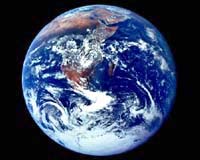
 |
Guangdong is already one of the richest provinces and produces a staggering one-tenth of the world's total consumer products.
But local leaders would like to see higher growth and have issued a blue print for the further development of the Pearl River Delta region.
At a conference in provincial capital Guangzhou to promote development in the region earlier this month, city mayor Zhang Guangning called for more foreign investment, saying his aim was to develop a "mega-city, mega-economy."
Zhang said the province's GDP grew 13.6 percent in the first half of the year and direct foreign investment had increased by 24.5 percent despite the devastating effects of the Severe Acute Respiratory Syndrome outbreak which originated in Guangdong.
"During that period we didn't ignore the economic development," he said.
So far more than 8,000 foreign invested enterprises are based in the province and expectations are for GDP to double by 2010 at the latest.
Zhang said the government would now focus on developing infrastructure and cleaning up the environment.
"Our next step to develop Guangzhou is to develop Guangzhou into a city which is equally for living and doing business," he said.
Government officials are keen to exploit the region's position -- it lies at the heart of the Pearl River Delta and within a 100 kilometre (62 mile) radius of some of China's biggest manufacturing centres.
An international airport which will be larger than Hong Kong's and a comprehensive transport network are already under construction.
At Nansha, 60 kilometres (37 miles) south of Guangzhou, an IT park, ship building and logistics facility and 40 new deep-water docks are planned or under development.
Preferential taxation policies are in place to attract foreign capital to Guangzhou and Nansha, which have a minimum monthly wage of 510 yuandollars) and 450 yuan respectively.
Administrative procedures have also been streamlined.
But Professor of Economics at Hong Kong's University of Science and Technology, Leonard Cheng, said while Guangdong's decision to build better infrastructure to attract foreign investment was sensible, plans for high-tech zones and deep-water ports might be unrealistic.
"I think the direction is right but of course there must be abuses here and unreasonable expectations," he said.
"Every county thinks that it could be the high-tech county and that can't be true.... Realistically how many of these so called high-tech zones will be actually able to attract the high-tech companies?"
Cheng also said the Nansha port development might not be realistic because deep-water ports were economically viable on sea ports rather than river fronts.
"Because they are sitting at the mouth of the river which brings sand and sediment all the time, I have doubts whether it will be viable," he said.
At a briefing with foreign journalists, Guangzhou's vice-mayor Chen Mingde stressed that efforts are being made to ensure sustainable development.
"In the past some companies may have moved heavy pollutants here in China but now these kinds of practices are not possible in China -- especially in Guangzhou," he said.
"As for the development of Nansha district, we will try to maintain or try to attain the standards of Europe."
A spokesman for Greenpeace Hong Kong said that while the Guangzhou government may have upgraded its emphasis on environmental protection, any developments in the Pearl River Delta should involve cooperation with Hong Kong on ecology issues.
"There's a huge rush to attract investment to different areas and better cooperation certainly between Hong Kong and Guangdong in the Pearl River Delta" is needed, he said.
Chen brushed off questions over whether there is room for another international port facility so close to Hong Kong and Singapore.
"The new port being built in Guangzhou does not simply mean more competition," he said. "It actually depends on the economic development of this region, whether the construction of the port can keep up with the speed of the development."
TERRA.WIRE |